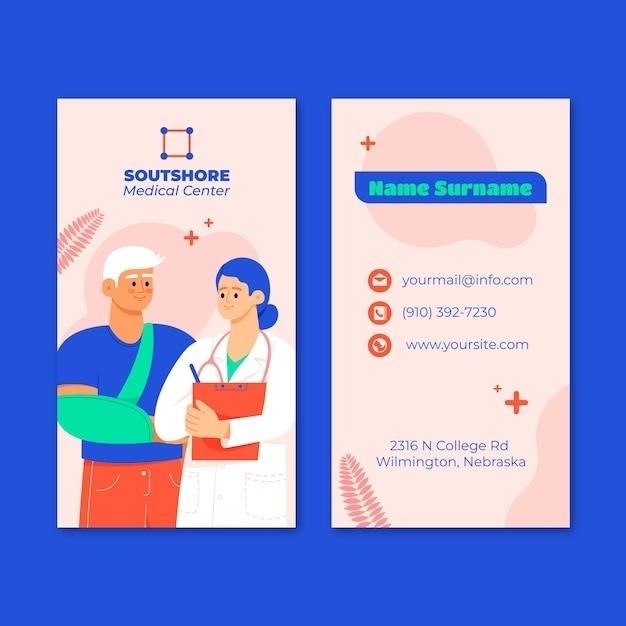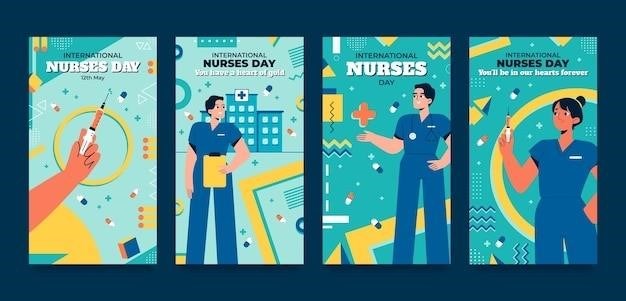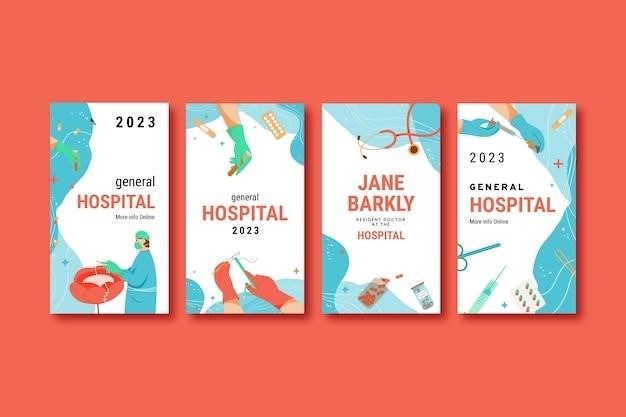Doenges’s Nurses Pocket Guide⁚ A Comprehensive Overview
This guide provides a concise yet thorough resource for nurses. It facilitates quick access to essential information, aiding in efficient and accurate patient care. Its portable format ensures convenient usability in various clinical settings.
Doenges’s Nursing Diagnosis Handbook, often referred to as Doenges’s Nurses Pocket Guide, stands as a cornerstone resource for nurses across diverse practice settings. This comprehensive guide offers a readily accessible compilation of nursing diagnoses, meticulously categorized and presented for rapid reference. Unlike bulky textbooks, its concise format prioritizes practicality, making it ideal for quick look-ups during busy shifts. The guide’s strength lies in its ability to seamlessly integrate nursing diagnoses with related medical diagnoses, providing a holistic perspective crucial for effective patient care. This integrated approach bridges the gap between medical and nursing perspectives, facilitating a more comprehensive understanding of patient conditions and the subsequent development of tailored care plans.
The handbook’s design emphasizes user-friendliness. Its clear structure and logical organization allow for efficient navigation, even amidst the pressures of a demanding clinical environment. Each nursing diagnosis is accompanied by pertinent information, including defining characteristics, related factors, and potential interventions. This comprehensive approach empowers nurses to make informed decisions, enhancing the overall quality of patient care provided. The guide’s value extends beyond individual use; it serves as an invaluable tool for collaborative discussions amongst healthcare professionals, fostering a shared understanding of patient needs and treatment strategies.
II. Key Features and Benefits
Doenges’s Nurses Pocket Guide distinguishes itself through several key features that significantly benefit nursing professionals. Its compact, portable design is a major advantage, allowing for easy access during patient rounds, bedside assessments, or in any clinical setting. The guide’s organization prioritizes quick retrieval of information; crucial diagnoses are easily located, saving valuable time in fast-paced healthcare environments. The inclusion of both nursing and related medical diagnoses fosters a more holistic understanding of patient conditions, promoting more comprehensive and effective care planning. This integrated approach helps nurses to connect the medical picture with the nursing perspective, allowing for a more nuanced approach to treatment.
Beyond its organizational strengths, the guide offers practical, readily applicable information. The detailed descriptions of nursing diagnoses, including defining characteristics and associated factors, empower nurses to make accurate assessments. The suggested interventions provide a structured approach to care planning, ensuring a consistent and high-quality standard of patient care. The guide also facilitates improved communication among healthcare professionals, as it offers a common language and framework for discussing patient conditions and treatment strategies. This shared understanding promotes collaboration and ultimately, better patient outcomes. Regular updates ensure the information remains current and relevant to evolving healthcare practices.
III. Utilizing the Guide in Practice
Effective utilization of Doenges’s Nurses Pocket Guide hinges on understanding its structure and applying its content strategically. Begin by familiarizing yourself with the guide’s organization, noting the logical flow of information from nursing diagnoses to related medical conditions and potential interventions. When assessing a patient, first identify the primary presenting problems and then use the guide’s index or table of contents to locate relevant nursing diagnoses. Carefully review the defining characteristics to ensure an accurate diagnosis. Once a diagnosis is confirmed, consult the guide’s suggested interventions to develop a comprehensive care plan. Remember to tailor the plan to the individual patient’s needs and circumstances, considering their unique medical history, preferences, and overall health status;
The guide’s concise format facilitates quick access to information, but thoroughness is key. Don’t simply skim; actively read and understand the rationale behind suggested interventions. This understanding allows for critical thinking and informed decision-making. Integrate the guide’s information with other assessment data, such as the patient’s chart and verbal reports from family members. Regularly review and update the care plan as the patient’s condition changes. The guide serves as a valuable tool, but it should complement, not replace, your clinical judgment and critical thinking skills. Always prioritize the patient’s safety and well-being, and consult with other healthcare professionals as needed.

Core Components of the Guide
Doenges’s guide centers on nursing diagnoses, offering detailed descriptions and related medical conditions for comprehensive patient assessment and care planning.
A. Nursing Diagnoses⁚ A Detailed Look
Doenges’s Nurses Pocket Guide provides an in-depth exploration of nursing diagnoses, crucial for comprehensive patient care. Each diagnosis is meticulously defined, ensuring clarity and precision in understanding patient conditions. The guide goes beyond simple definitions; it offers a nuanced perspective, incorporating relevant defining characteristics that aid nurses in accurate assessment and diagnosis. This detailed approach allows for a more precise identification of patient needs, paving the way for effective and targeted interventions. The inclusion of related factors further enriches the understanding of each diagnosis, providing valuable context and contributing to a holistic approach to patient care. This detailed breakdown of nursing diagnoses makes the guide an invaluable tool for both seasoned nurses seeking a quick reference and students mastering the art of nursing assessment. The comprehensive nature of the information empowers nurses to confidently select appropriate interventions and develop personalized care plans that address the unique needs of each patient. The inclusion of potential complications associated with each diagnosis allows for proactive planning and preventative measures, ultimately enhancing patient safety and outcomes. By presenting nursing diagnoses with such meticulous detail, Doenges’s guide fosters a deeper understanding, leading to improved patient care and a higher level of nursing proficiency.
B. Related Medical Diagnoses and Conditions
Doenges’s guide expertly links nursing diagnoses with their corresponding medical diagnoses and conditions. This crucial connection provides nurses with a comprehensive understanding of the patient’s overall health picture, moving beyond the isolated symptoms to grasp the underlying disease processes. The guide’s clear presentation of this interconnectedness helps nurses make informed decisions about appropriate interventions and treatment plans. By understanding the medical context of a patient’s condition, nurses can better anticipate potential complications and implement preventative measures. This integrated approach fosters collaboration between nurses and other healthcare professionals, improving communication and ensuring the delivery of holistic patient care. The detailed information on related medical conditions allows nurses to recognize subtle changes in a patient’s status, enhancing early detection of potential problems and enabling timely interventions. This feature is particularly beneficial in complex cases involving multiple comorbidities, providing a valuable resource for developing effective and coordinated care strategies. This cross-referencing of medical and nursing diagnoses emphasizes a holistic view of patient care, promoting a deeper understanding of the patient’s condition and ultimately leading to improved patient outcomes. The guide’s organization in this area facilitates quick access to this vital information, making it an invaluable tool in busy clinical settings.

Practical Application and Case Studies
This section demonstrates the guide’s real-world use. It features illustrative case studies and practical examples, solidifying understanding and building confidence in application.
Step-by-Step Guide to Using the Resource
Effectively utilizing Doenges’s Nurses Pocket Guide requires a systematic approach. Begin by identifying the patient’s presenting problem or medical diagnosis. Consult the guide’s index or table of contents to locate the relevant section. This typically involves searching by either medical diagnosis or by a relevant nursing diagnosis. Once located, carefully review the provided information, paying close attention to the associated nursing diagnoses, potential complications, and recommended interventions. The guide often presents these in a clear, concise format, facilitating quick comprehension. Remember to always correlate the information within the guide with your own clinical assessment and judgment. Never solely rely on the pocket guide for making critical care decisions; it serves as a supplementary tool to enhance your clinical expertise. Prioritize the holistic needs of the patient, considering their medical history, current medications, and overall health status. After reviewing the relevant information, formulate a comprehensive nursing care plan that addresses the patient’s unique needs and incorporates the suggested interventions from the guide. Finally, document all actions taken, including assessment findings, interventions implemented, and the patient’s response to treatment. Regularly review and update the care plan as the patient’s condition evolves.
Real-World Examples and Case Studies
Consider a patient admitted with pneumonia. Doenges’s guide might highlight relevant nursing diagnoses such as “Ineffective Breathing Pattern” and “Impaired Gas Exchange.” The guide would then offer potential interventions like monitoring respiratory rate and depth, administering oxygen therapy as prescribed, and encouraging frequent coughing and deep breathing exercises. A case study might detail a scenario where a patient with heart failure experiences worsening dyspnea. The guide’s section on heart failure would provide a framework for assessing the patient’s fluid status, monitoring vital signs, and administering prescribed medications. Another example could focus on a diabetic patient with a foot ulcer. The guide would offer guidance on assessing the wound, managing blood glucose levels, and preventing infection. These real-world scenarios illustrate how the guide aids in decision-making. The guide’s structure allows nurses to quickly access information about common complications and interventions, improving the speed and accuracy of their clinical judgment. By presenting these case studies, the guide demonstrates practical application of its content, enhancing understanding and retention of key concepts. These examples highlight the guide’s value in daily nursing practice, empowering nurses to deliver more effective and efficient patient care.
Troubleshooting Common Challenges
One common challenge is finding specific information quickly within the guide. To overcome this, familiarize yourself with the guide’s organization and utilize the index or table of contents effectively. Consider creating personalized tabs or bookmarks for frequently accessed sections. Another challenge might be adapting the guide’s information to unique patient situations. Remember that the guide offers a framework; individual patient needs may require modifications to the suggested interventions. Always prioritize patient-specific assessments and integrate the guide’s information within a holistic care plan. Difficulties might arise when dealing with unfamiliar medical diagnoses or procedures not explicitly covered in the guide. In such cases, consult other reliable resources such as medical textbooks, online databases, or experienced colleagues. Remember that the guide serves as a supplementary tool, not a replacement for comprehensive medical knowledge. Finally, keeping the guide updated is crucial. New research and advancements in healthcare necessitate regularly checking for updated editions or supplementary materials to ensure the information remains current and accurate. By proactively addressing these challenges, nurses can fully leverage the guide’s potential and enhance their clinical practice.
